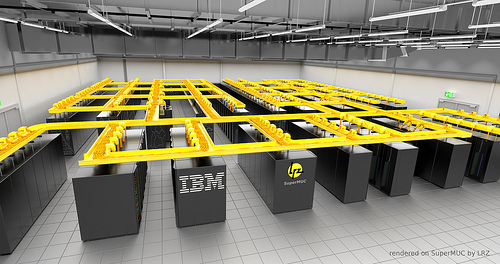IBM cools supercomputer with hot water

This is one of those counterintuitive technology innovations that I love to read and write about: IBM has collaborated with the Leibniz Supercomputer Center in Munich to deploy a hot-water-cooled supercomputer that uses about 40 percent less energy than a comparable system cooled by air.
The system, called the LRZ "SuperMUC," is based on an IBM System x iDataPlex Direct Water Cooled dx360 M4 server. It contains more than 150,000 cores and can provide peak performance of up to three petaflops -- which is described as the equivalent of the processing power of 110,000 personal computers. The SuperMUC just wound up as No. 4 on the latest list of the world's top 500 fastest supercomputers.
The system was built with new hot-water cooling technology from IBM that helps with both shrinking the size of the system (by a factor of 10) and with reducing its energy consumption compared with traditional designs, according to IBM research and development types.
"As we continue to deliver on our long-term vision of a zero emission data center, we may eventually achieve a millionfold reduction in the size of the SuperMUC, so that it can be reduced to the size of a desktop computer with a much higher efficiency than today," said Bruno Michel, manager of Advanced Thermal Packaging for IBM Research, in a statement.
The hot-water cooling technology draws heat away from the processors and memory components, eliminating the need for traditional air cooling systems. Thus the reduction in the amount of power needed to run it. The heat being captured by the system will be diverted into the heating systems for the Leibniz Supercomputing Center campus. This application will help the center save an estimated $1.25 million annually in heating costs, according to IBM.
